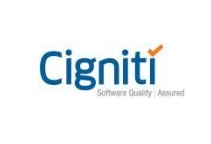How SME companies are tuning to cloud and Saas technology for business continuity and operations
 The COVID-19 pandemic has had a severe impact on our world. In the last year and a half, couple of hundred million individuals got infected and millions of lives were lost. Countries had to strike a delicate balance between lives and livelihoods with economies requiring substantial financial stimulus.
The COVID-19 pandemic has had a severe impact on our world. In the last year and a half, couple of hundred million individuals got infected and millions of lives were lost. Countries had to strike a delicate balance between lives and livelihoods with economies requiring substantial financial stimulus.
While the pandemic affected most businesses, Small and Medium Enterprises (SMEs) suffered the most. They suffered significant demand variations and an overall reduction in consumption of their products and services. The reduced revenues were further compounded by cash flow and labor shortages and supply chain issues. Most SMEs had to curtail operations for a substantial period. Businesses are still unable to forecast when recovery would happen or when stability will return.
The SMEs need to rethink their strategy and adapt their business models to the changed environment. One good place to start with are the IT systems and the associated infrastructure. Nearly all systems now can utilize cloud computing and SaaS solutions for the non-differentiated functional areas. The questions to ask are, which of the IT systems add to the SMEs value proposition? Which IT systems differentiate the SMEs business with that of a competitor? Which IT systems encapsulate the IP of an SME?
Fundamental Business Applications like Customer Relationship Management, Human Resource Management, Accounting Systems, Supply Chain Management, and Inventory Management are necessary for successful operations, but do not provide differentiation. There is also a growing set of vendor vertical solutions. Both are good SaaS solution candidates.
Then an SME may have IT systems that encapsulate their intellectual property, systems that have specific algorithms or processes that differentiate an SME from a competitor. An SME may not want to replace these with a SaaS solution, but these too are amenable to cloud computing.
The advantages for an SME to subscribe to cloud computing or SaaS solutions include:
- Business agility and scalability: Cloud computing and SaaS solutions provide flexibility to scale up or down computing and storage resources on an immediate basis. This allows an SME to rapidly scale their business.
- Data and application resilience: If the Cloud and SaaS solutions are designed and implemented right, they have an ability for quick failovers and can help ensure uninterrupted application and data availability to SMEs. Most SaaS solution providers have SLAs with high application uptime availability.
- Workforce mobility: SaaS solutions on the cloud provide access to business applications and data from anywhere, at any time, using any internet-connected device. This allows for seamless remote working and work from home models.
- Industry latest practices: SaaS platforms can drive daily innovations, allowing addition of new features and evolution with industry requirements and regulations rapidly – developed once by the solution provider and available immediately to all organizations.
- Faster Maintenance and Upgrades: Many SMEs get stuck with clunky, poorly written, buggy, custom built software or older versions of on-prem vendor software. These are very costly to maintain and to keep them up to date. In a SaaS model, the service provider upgrades the solution, and it becomes available to their customers with the upgrade costs already amortized into the monthly pricing. The costs and effort associated with upgrades and new releases are lower than the on-prem model.
- SMEs can focus on their Value Proposition: Using SaaS and cloud solutions helps the SMEs to focus on their business rather than having a large internal IT team working to keep the IT systems and infrastructure up to date and running.
- Lower costs: SaaS solutions can provide substantial cost savings since they are typically in a shared environment and/ or are multi-tenanted, sharing the costs of the hardware and software. Implementations and upgrades are seamless and have minimal SME employee costs.
- Cash Flow advantages: Building your own bespoke applications and server equipment requires significant upfront expenditure while cloud services or SaaS solutions are priced as monthly operating expense. For SMEs this gives a significant cash flow advantage.
These are substantial benefits that an SME can gain from the use of cloud computing or SaaS solutions. Getting world class software solutions in a low-cost monthly SaaS model with an ability to scale up and down to ride out business turbulence in these volatile times is a big advantage. And when cash is king and required for survival, the cash flow advantages of a SaaS model are a huge plus!
Authored by:- Mr. Anurag Singh, Managing Director, India for Clearwater Analytics
(The views expressed in this article are by – Mr. Anurag Singh, Managing Director, India for Clearwater Analytics. Technuter.com doesn’t own any responsibility for it.)



